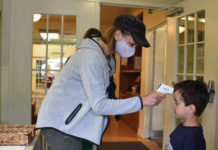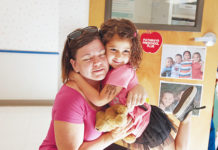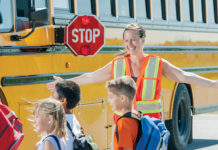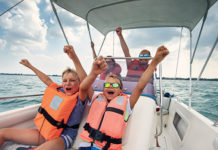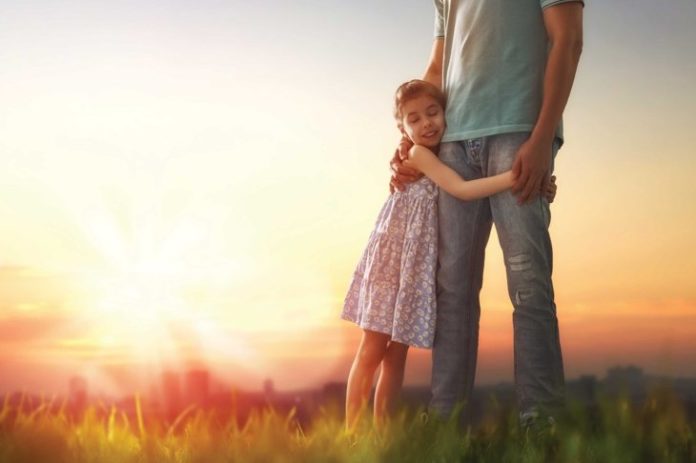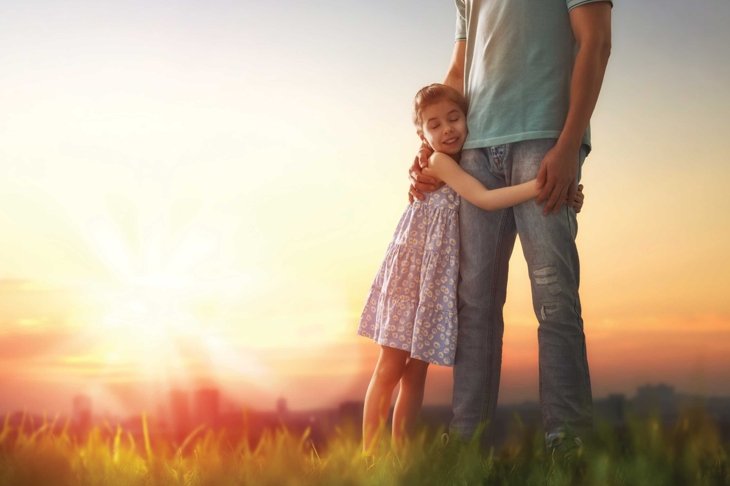
With academic, creative, and sports endeavours, kids’ lives today are often as busy as their parents’. Communities are realizing that it’s more important than ever not only to help kids find ways to manage stress and develop self-awareness and compassion, but also to adopt these practices themselves.
As more research develops and becomes publicly available, the timeless adage, “It takes a village to raise a child,” has never seemed more relevant. Programs combining techniques and practices offering resilience, inner awareness, and more effective ways to manage stress are becoming widely accepted and implemented, not only within educational institutions, but also in extracurricular areas such as play and sport.
Educators, as well as their counterparts, are beginning to see the value of mindfulness in schools and the importance of collaborating with and including parents, teachers, and even coaches.
Mindfulness in schools
Heidi Bornstein is an educator who co-founded a successful mindfulness program for teens in response to a local school in Toronto, whose students were approaching the guidance office seeking help with stress and anxiety. The program was so successful that the school decided to implement it as part of its grade 11 leadership course.
This view is supported by the Ontario Ministry of Education, which released the Foundations for a Healthy School in December 2014. This resource suggests strategies and activities including social-emotional learning and resiliency, both of which, the ministry says, can be developed using mindfulness.
The effect is well received by the teens themselves. As one of Bornstein’s students wrote, “I learned how to live in the moment, and stop thinking about the past and future. The important message was that it’s okay to slow down and take your time.”
In working with children, Katie Thom, a school psychologist and educator in Winnipeg, uses a variety of formats that cover a wide age range. She has seen benefits in her students such as improvements in intra- and interpersonal awareness, self-reflection, social skills, and emotional health, as well as reductions in behavioural problems.
“One of the most powerful comments I have received at the end of a course was from a student with a developmental disability who shared, ‘I learned how to be comfortable with myself; it’s okay to be myself,’” she says.
She stresses the importance of ensuring that mindfulness is always presented as an invitation and not forced on children. “It’s about empowerment, not behaviour management.”
Mindfulness for parents and teachers
Bornstein believes that mindfulness-based practices also help restore balance in both educators’ and parents’ lives, enabling them to be present in adding valuable social and emotional skills for kids.
Bornstein says, “Teachers often neglect their own needs, resulting in high incidences of stress and burnout in the profession. Mindfulness practices can help restore balance in educators’ lives, enabling them to be present for their students.”
The same is true for caregivers. “Parents can learn to be fully present with their children and teens, in both shared moments of joy as well as when their buttons have been pushed to the limit. Mindfulness teaches awareness and regulation of automatic reactions and behaviours. It supports the development of compassion for self and others,” says Bornstein.
Thom agrees, and feels that parent/caregiver involvement is essential to the work she does. Thom often advocates for parents and/or teachers to train in mindfulness by taking an eight-week course or doing a book study together.
Mindfulness on the field
As a father and soccer coach, Philip Sackey is passionate about youth development through team sport. He recognizes the beneficial effect a centred coach can have, not only on an individual player, but on team performance and resiliency as a whole.
“For me, a holistic approach allows coaches and teams to more readily focus on long-term outcomes and learn from short-term disappointments,” says Sackey. “By building the player, we build the team. The basic principle is that the whole is greater than the sum of its parts.
“If the coach is not centred or mindful of their state of being, it’s unlikely they will be mindful of the players’ or the team’s frame of mind. This omission can lead to a less optimal performance or outcome.”
Often, outmoded styles of communication tend to be fear based or rely on an aggressive communication style. These can have a negative effect on kids playing a sport meant to be as fun as it is healthily competitive, which can affect the morale and performance of the team as a whole.
Sackey believes embracing a more supportive way of communicating with, and encouraging young players is key: “The coach’s attitude and communication style are one of the biggest components of the coach/player/team dynamic. The skilled coach can lift a player and team to new heights, but equally crush them with an ill-thought-out retort.
“A useful tool I use when dealing with players is the IPP (improvement, positive, positive) approach:
- The improvement: You may have more success if you try it like this.
- The positive: However, you recognized the situation, which was good.
- The positive: Well done!”
Sackey adds that the communication style can be framed in relation to developmental stages, and that there is always an opportunity to approach these with a positive and encouraging mindset.
Some methods may make brief appearances in our collective quest for leading healthier, more balanced, and peaceful lives. It is apparent by the exponential growth and proven benefits that practices of a holistic nature are not only here to stay, but providing families and entire communities with the tools for a positive and unified environment for kids, and for themselves.
Building from within
As the desire and interest to create a more balanced, nurturing environment arises, a variety of books, courses, and audio clips are available to suit any mindfulness seeker’s intentions.
- For younger children, Silence by Lemniscates (Magination Press, 2012), is a hardcover book with simple text and evocative illustrations that encourage the exploration of silence. Also available as a beautiful video clip on YouTube, these approaches help guide younger children to be more in touch with their present experience through silence.
- Other resources can be found at DiscoverMindfulness.ca, a nonprofit organization based in Ontario, which includes recent mindfulness news, evidenced benefits, and training locations throughout the nation.
- Another excellent website is MindfulnessEveryday.org, which offers various programs for parents, educators, and children, such as Yoga 4 Kids. It includes a comprehensive list of holistically inclined story books, audio resources, and even teen retreats. Among their teen/youth resources is the “Mindful Minute; Give Your Brain a Break” section. Here teens can listen to audio files such as Mindful Minute-Field of Grass, which, though narrated by a teen, also works for busy parents.










